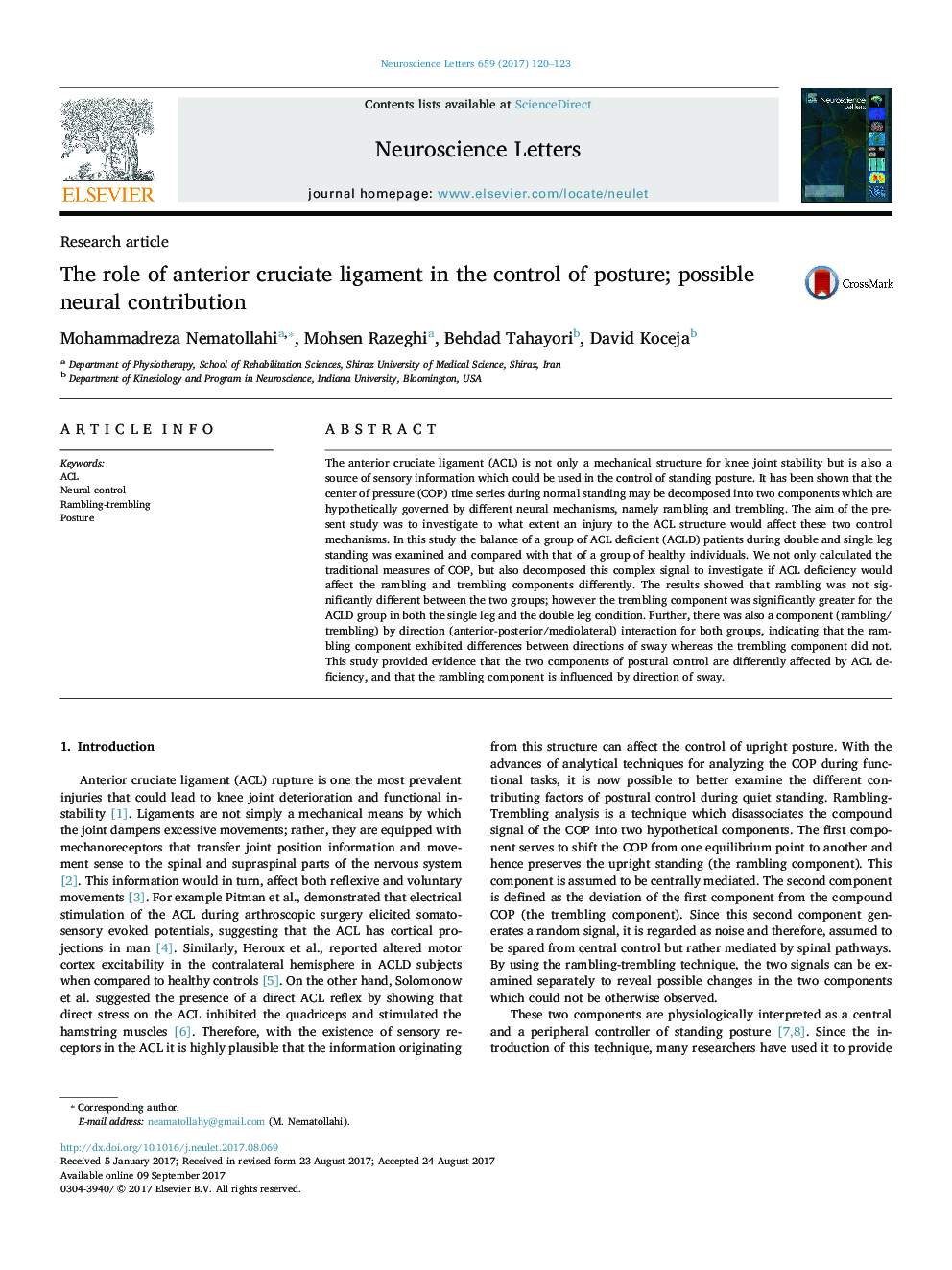| کد مقاله | کد نشریه | سال انتشار | مقاله انگلیسی | نسخه تمام متن |
|---|---|---|---|---|
| 5738184 | 1615040 | 2017 | 4 صفحه PDF | دانلود رایگان |
- Postural control of subjects with ACL deficiency was examined using rambling/trembling technique.
- This technique is assumed to examine two different neurally mediated postural control mechanisms.
- Rambling and trembling were differently affected by ACL deficiency.
- Sensory information from ACL might contribute in neural mechanism of postural control.
The anterior cruciate ligament (ACL) is not only a mechanical structure for knee joint stability but is also a source of sensory information which could be used in the control of standing posture. It has been shown that the center of pressure (COP) time series during normal standing may be decomposed into two components which are hypothetically governed by different neural mechanisms, namely rambling and trembling. The aim of the present study was to investigate to what extent an injury to the ACL structure would affect these two control mechanisms. In this study the balance of a group of ACL deficient (ACLD) patients during double and single leg standing was examined and compared with that of a group of healthy individuals. We not only calculated the traditional measures of COP, but also decomposed this complex signal to investigate if ACL deficiency would affect the rambling and trembling components differently. The results showed that rambling was not significantly different between the two groups; however the trembling component was significantly greater for the ACLD group in both the single leg and the double leg condition. Further, there was also a component (rambling/trembling) by direction (anterior-posterior/mediolateral) interaction for both groups, indicating that the rambling component exhibited differences between directions of sway whereas the trembling component did not. This study provided evidence that the two components of postural control are differently affected by ACL deficiency, and that the rambling component is influenced by direction of sway.
Journal: Neuroscience Letters - Volume 659, 17 October 2017, Pages 120-123
